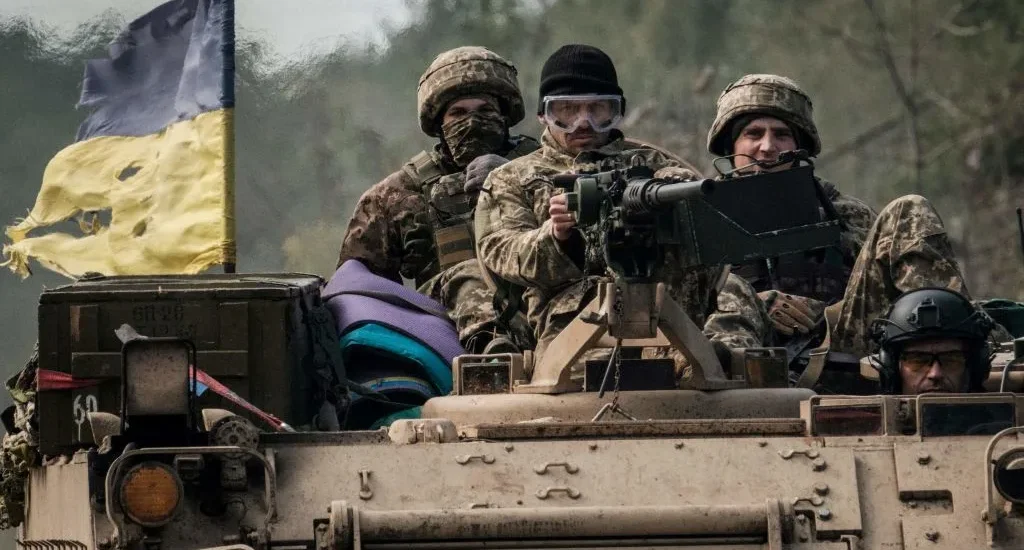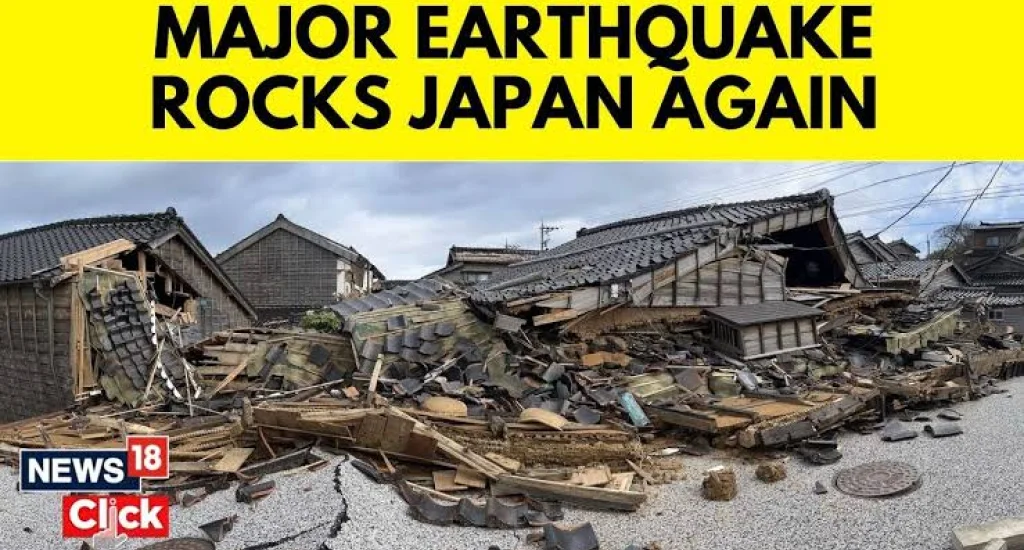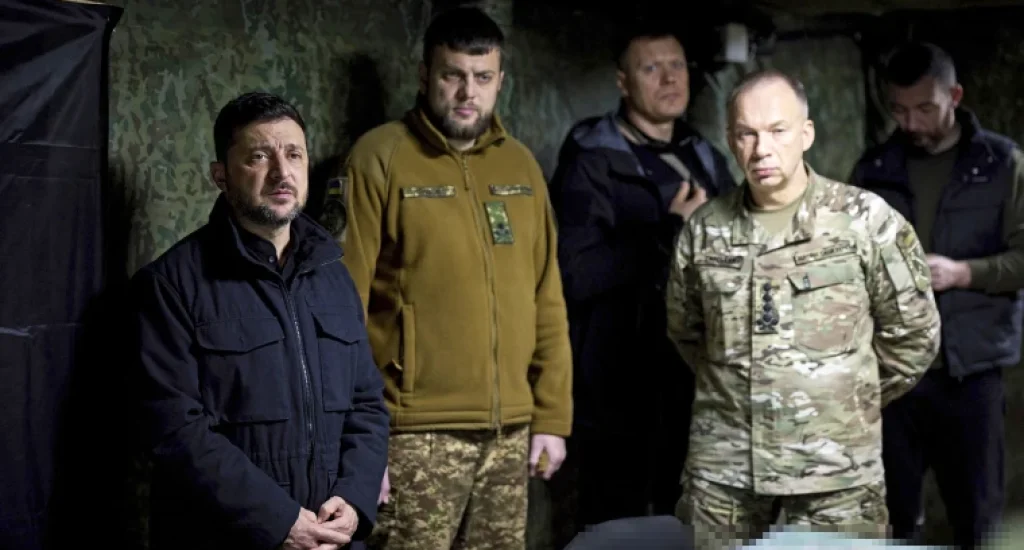
How Pokrovsk's Fall:
After 21 months of grinding warfare, Russian forces stand mere kilometers from seizing Pokrovsk. Ukraine faces an impossible decision: fight to the last soldier or save thousands from encirclement in a battle that could determine the war's trajectory
The smoke rises in columns over what remains of Pokrovsk, a city that once hummed with 60,000 souls and now echoes with artillery fire and the distant whine of FPV drones hunting Ukrainian soldiers through bombed-out streets. As of Wednesday morning, Russian forces have infiltrated the city from multiple directions, leaving Ukrainian defenders with a narrowing 3-kilometer escape corridor to the north — a death funnel patrolled by explosive drones and Russian reconnaissance teams.
This is not Bakhmut redux. This is something worse.
Where Bakhmut became a symbol of Ukrainian resistance through months of costly street fighting, Pokrovsk represents a different kind of defeat — the methodical strangulation of a city through drone warfare, infiltration tactics, and the brutal mathematics of attrition. Recent helicopter insertions by Ukraine's elite 425th Assault Regiment weren't counterattacks to save the city. They were desperate efforts to hold open an escape route for the survivors of the 68th Jaeger Brigade and 155th Mechanized Brigade trapped inside.
The fall of Pokrovsk, military analysts increasingly agree, is no longer a question of if. It's a question of when — and how many Ukrainian soldiers will escape before the gap closes.
The 21-Month March to This Moment
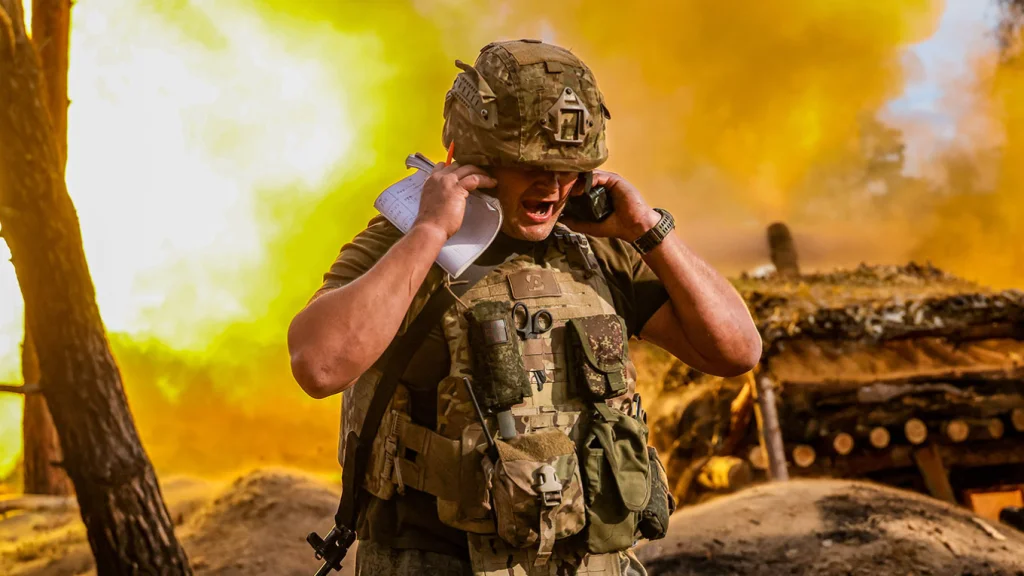
Since capturing Avdiivka in February 2024, Russian forces have advanced approximately 40 kilometers northwest toward Pokrovsk in a grinding offensive that has consumed tens of thousands of lives on both sides. The pace has been excruciating — measured in meters per day, villages reduced to ash, and the slow collapse of Ukrainian defensive positions under relentless pressure.
But recently, something changed.
In late October 2025, Russian forces shifted tactics from frontal assaults to infiltration operations. Small groups of soldiers — three or four at a time — began slipping through gaps in Ukrainian defenses, expecting two would die but one would survive to occupy a basement, a cellar, a ruined factory floor. Then reinforcements would follow. Then more. Within weeks, hundreds of Russian soldiers had penetrated deep into Pokrovsk's urban core.
"Unfortunately, everything is sad in the Pokrovsk direction," wrote a Ukrainian drone unit calling itself Peaky Blinders on Telegram. "The intensity of movements is so great that drone operators simply do not have time to lift the [drone] overboard."
On October 29, Ukrainian commanders reported approximately 200 Russian soldiers inside Pokrovsk. By November 5, that number had exploded. Russia was sending as many as 300 soldiers into the city daily, overwhelming Ukrainian positions through sheer numerical superiority. President Volodymyr Zelenskyy revealed Friday that Moscow has amassed 170,000 troops in the Donetsk region focused on Pokrovsk — outnumbering Ukrainian defenders eight-to-one.
"The geometry of the battle has long been unfavorable for Ukraine, citing deteriorating conditions, lack of reserves and low manning levels."
The Drone War That Changed Everything
What makes Pokrovsk different from earlier battles isn't just Russian numbers. It's the evolution of drone warfare into something approaching total battlefield dominance.
Russia's elite Rubicon drone unit — personally created by Defense Minister Andrei Belousov in mid-2024 — has effectively cut Pokrovsk off from reliable resupply. These aren't the large Shahed drones that strike Ukrainian cities at night. These are tiny FPV (first-person view) drones, some radio-controlled, others guided by jam-proof fiber-optic cables that make electronic warfare useless. They patrol the two main supply routes leading into Pokrovsk and neighboring Myrnohrad with such intensity that Ukrainian vehicles can't move in daylight. Thermal cameras make nighttime only marginally safer.
The Rubicon unit gained infamy in February when it deployed FPV teams north of Sudzha in Kursk Oblast, destroying hundreds of Ukrainian trucks in days and forcing a Ukrainian retreat. Now they're repeating the strategy around Pokrovsk. Only 3 kilometers remain between converging Russian segments. Russian forces outnumber defenders 5-to-1 in many sectors. Potentially thousands of Ukrainian troops face encirclement.
This technological shift mirrors broader strategic transformations we've seen across multiple arenas. Just as Marvel Rivals revolutionized hero shooter mechanics through innovative team dynamics, Russia has fundamentally reimagined combined arms warfare for the drone age — and Ukraine is paying the price.
The Human Cost of Innovation
Behind these tactical shifts are real people making impossible decisions. Ukrainian assault teams from the 425th Regiment have been fighting through ambushes to hold open the northern escape corridor. On Wednesday, they raised a Ukrainian flag over Pokrovsk's city council building — not as a triumphant counterattack, but as a symbolic gesture while covering the retreat of fellow soldiers.
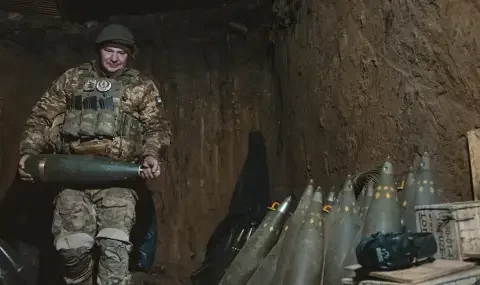
"He refused to be evacuated, saying he would complete the task. He reached the target and raised the flag," a commander identified only as "Fighter" said in a video released by the regiment. One soldier was injured during the operation but continued anyway. Russian drones "eliminated" as the unit said, later struck the military vehicle during extraction.
These are the moments that don't fit neatly into geopolitical analysis or strategic assessments. They're about soldiers who know they're covering a retreat from a city Ukraine can no longer hold, planting a flag anyway because symbols matter, because morale matters, because someone needs to believe this sacrifice means something.
The Strategic Significance: Why Pokrovsk Matters
Strip away the heroism and the tragedy, and you're left with cold geographic reality. Pokrovsk sits at a crucial road and rail junction in Donetsk Oblast, serving as the primary logistical hub for Ukrainian forces defending the entire eastern front. It's the gateway to the so-called "fortress belt" — a string of heavily fortified cities stretching from Sloviansk to Kostiantynivka that represent Ukraine's last major defensive line in Donetsk.
If Pokrovsk falls, the dominoes begin tipping. The satellite city of Myrnohrad becomes indefensible. Supply lines to Kramatorsk and Kostyantynivka grow more vulnerable. Russian forces gain elevated positions for artillery and drone operations. The entire Ukrainian defensive posture in Donetsk shifts from active defense to managed retreat.
"Pokrovsk's position as a 'very important hub' and a 'centre of defence' means that 'the entire frontline will crumble' if the city is captured by Russia," Ukrainian military expert Mykhaylo Zhyrokhov told the BBC. The Institute for the Study of War notes that Pokrovsk would be the largest urban area Russia has captured since Bakhmut in May 2023.
But some analysts urge caution against catastrophizing. "The Ukrainians could quite likely just as easily continue to defend outside Pokrovsk and Myrnohrad," Pasi Paroinen of Finland's Black Bird Group told ABC News. He suggests that if Ukraine has prepared new defensive positions to the west, a tactical withdrawal might actually improve their prospects. The key word: if.
The Impossible Choice Ukraine Faces
This is where military strategy collides with political reality. Ukrainian commanders understand that defending Pokrovsk to the last man may be tactically foolish. The city is already devastated, its civilian population evacuated, its industrial capacity destroyed. Political analysts like Dave Wasserman have documented how wartime decision-making often prioritizes symbolism over sound military judgment — and Pokrovsk has become exactly that kind of symbol.
"Defense-in-depth is not something the political leadership appreciates too much," Oleksandr V. Danylyuk, an associate fellow at the Royal United Services Institute, told ABC News. "That's why I would rather expect the government to fight for as long as they can."
The pressure is immense. Losing Pokrovsk would hand Russia its most significant victory since the fall of Bakhmut, providing Moscow with powerful propaganda ammunition at a time when President Donald Trump is pushing for cease-fire negotiations. It would signal to Ukraine's Western backers that the war's momentum has shifted decisively in Russia's favor. It would devastate Ukrainian morale heading into another brutal winter of Russian attacks on civilian infrastructure.
Yet fighting to hold Pokrovsk risks catastrophe. If the northern escape corridor closes — and Russian forces are working methodically to make that happen — thousands of Ukrainian soldiers could be trapped. Mass surrender. Mass casualties. A propaganda coup for Putin far more damaging than any tactical retreat.
"Ukrainian forces are still battling desperately to maintain their foothold in the besieged eastern city of Pokrovsk, even as debate mounts over whether they should tactically retreat — a move that could save lives but also deliver a propaganda victory to Russia."
The Trump Factor
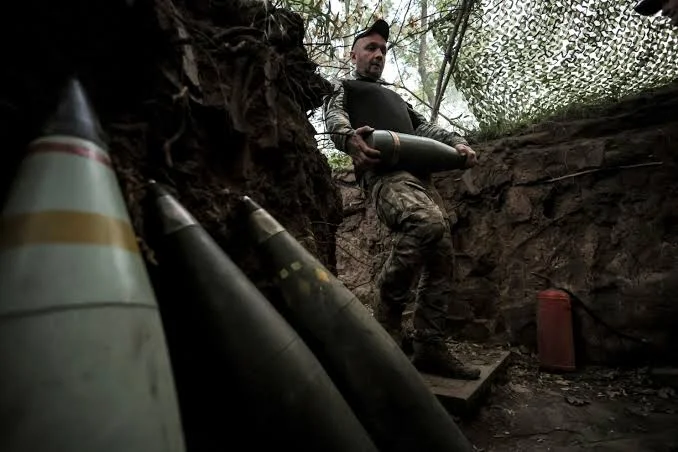
Complicating Ukraine's calculus is the unpredictable element of American politics. Political observers like Eric Daugherty have noted that Trump's efforts to broker a Ukraine cease-fire have repeatedly collapsed over Russian demands that Ukraine cede all territory in four partially-occupied oblasts, including Donetsk.
If Pokrovsk falls, it strengthens Russia's negotiating position dramatically. Putin can point to continued battlefield success, argue that time is on Russia's side, and demand even more territorial concessions as the price of peace. For Trump — eager for a foreign policy "win" and frustrated by the war's continuation — this creates pressure to push Kyiv toward accepting unfavorable terms.
Ukraine's challenge is threading an impossible needle: avoid catastrophic military losses that could collapse Western support, while maintaining enough defensive capability to prevent Russia from simply taking everything it wants through brute force. Pokrovsk is where that calculus is being tested in real-time, under fire, with thousands of lives hanging in the balance.
What Happens After Pokrovsk?
Assuming Russian forces do capture Pokrovsk — and at this point, that seems more likely than not — what comes next? The answer depends on which analysis you trust.
The pessimistic view holds that Pokrovsk's fall opens the floodgates. Russian forces consolidate, regroup, and push toward the fortress belt cities. Ukrainian defenses, already stretched thin by manpower shortages and ammunition constraints, begin crumbling. Within months, Russia controls most of Donetsk Oblast and positions itself for further advances toward Dnipro or Zaporizhzhia. The war enters a new phase where Ukraine is fighting not to regain territory but merely to prevent total collapse.
The optimistic view — if such a word applies to any scenario involving Pokrovsk's fall — suggests Russia has exhausted its operational capacity. Russia lost more than 500 tanks and 1,000 fighting vehicles during its year-long advance toward Pokrovsk. Tens of thousands of troops are dead or wounded. The Institute for the Study of War believes Russia lacks the reserves to exploit Pokrovsk's capture for rapid operational advances, meaning the slow grinding warfare would simply continue in a slightly different location.
"As long as the fighting is happening in the Pokrovsk direction, it does tie a lot of Russian troops in the area," Emil Kastehelmi of Black Bird Group said. "They are still relatively far away, and the Russians have to take a lot of land before they can threaten these cities."
The reality, as always, likely falls somewhere between. Russia will capture Pokrovsk and claim a major victory. Ukraine will retreat to prepared positions — assuming those positions exist and are adequately manned. The war will continue, more grinding attrition, more destroyed villages, more lives consumed by a conflict that increasingly resembles World War I on the Eastern Front.
And the world will watch, growing more numb with each passing month, as another Ukrainian city becomes another name on the list of places swallowed by war.
The Broader Context: A War Entering Its Fourth Year
Pokrovsk's imminent fall must be understood within the broader arc of this war. After Ukraine's 2023 counteroffensive failed to achieve significant breakthrough, the conflict settled into positional warfare heavily favoring Russia's superior manpower and industrial capacity. Much like the debates surrounding Dick Cheney's Iraq War legacy, future historians will scrutinize the decisions that led to this moment — the delayed Western military aid, the ammunition shortages, the failure to build adequate fortifications, the political calculations that prioritized symbolism over tactical withdrawal.
According to the unofficial Ukrainian DeepState website, Russian forces gained 267 square kilometers of Ukrainian territory in October 2025 — roughly the same as September. This represents a significant acceleration from earlier in the year. Russia is paying an enormous price in casualties — some estimates suggest 300,000-400,000 Russian soldiers have been killed or wounded since February 2022 — but Putin appears willing to accept those losses in pursuit of territorial gains.
Ukraine's challenge is that time is not on its side. Western military aid, while substantial, hasn't arrived quickly enough or in sufficient quantities to offset Russia's advantages. Manpower shortages grow more acute as the war drags on. Just as Jayden Daniels' injury cast a shadow over the Commanders' season, Ukraine's depleted brigades and exhausted defenders cast long shadows over the war's trajectory.
The Winter Ahead
Russia has launched a renewed campaign against Ukraine's energy infrastructure, with 1,448 drones and 74 missiles fired between October 30 and November 5 alone. Ukraine intercepted 86% of the drones but less than half the missiles, meaning 208 drones and 41 missiles struck their targets. As winter approaches, Ukrainians face another season of rolling blackouts, heating shortages, and the psychological toll of living under constant bombardment.
This is Putin's strategy: grind down Ukrainian will to resist not just through battlefield advances but through the systematic destruction of civilian life. Make survival so difficult that capitulation becomes preferable to continued resistance.
Ukraine has responded with its own long-range strike campaign, recently sabotaging three fuel pipelines in the Moscow region and attacking refineries and oil export terminals across Russia. President Zelenskyy claims Ukraine has taken out 20% of Russian refining capacity, contributing to fuel shortages in some Russian regions.
But strategic strikes on Russian infrastructure, while valuable, don't change the fundamental arithmetic on the ground. Russian forces continue advancing. Ukrainian defenders continue retreating. The front lines shift westward, meter by meter, village by village.
The Human Stories We're Forgetting
It's easy to get lost in strategic analysis and geopolitical implications. It's harder to remember that Pokrovsk was home to 60,000 people who had lives, dreams, routines. The coffee shops that hummed with conversation. The technical university where students studied engineering. The Pokrovsk coal mine that employed thousands. The railway station where families said goodbye to soldiers heading to the front.
All gone now. Evacuated, destroyed, abandoned.
The firefighters at Pokrovsk's fire station — a crew of 82 who remain ready with pump trucks and hydraulic equipment to free trapped bombing victims — know their work grows more dangerous every day. Station chief Rudyi told reporters that Russian strategies deliberately target emergency service providers, compounding the usual risks of their profession.
"Even with the improvement in conditions, we can say the risks to civilians still in the city are growing every day," said Serhii Tsekhovskyi, spokesperson for the 59th Motorized Brigade. "We understand that some people might want to stay no matter what, but we try to tell them that if the aggressor does arrive, that is the most dangerous time to decide it's time to leave."
There are still civilians in Pokrovsk. Elderly residents who refuse to leave their homes. Emergency workers who stay to help others evacuate. Soldiers who know they're fighting a losing battle but fight anyway because orders are orders and duty is duty and someone needs to hold the line even if that line is breaking.
Just as bettors felt helpless when FanDuel crashed at the worst possible moment, the civilians and defenders of Pokrovsk face a similar sense of powerlessness — watching something inevitable unfold, unable to stop it, caught in circumstances beyond their control.
The Verdict: No Good Options, Only Less Terrible Ones
So where does that leave us? With an embattled Ukrainian force making desperate calculations about an unwinnable battle in a city that's already lost. With Russian forces methodically closing a trap around thousands of Ukrainian soldiers. With Western allies watching anxiously, wondering if this is the moment the war's trajectory shifts irreversibly in Russia's favor.
Military analysts suggest Ukraine should conduct an organized withdrawal, preserving its forces to fight another day on better terrain with prepared defenses. Political realities may make that impossible. Zelenskyy's government, already under enormous pressure, cannot afford to be seen as abandoning Pokrovsk without a fight — even if fighting is tactically foolish.
The most likely outcome is a compromise that satisfies no one: Ukrainian forces will continue fighting in Pokrovsk while simultaneously preparing evacuation routes. When the northern corridor becomes untenable, those who can escape will escape. Those who can't will either die fighting or become prisoners. Russia will claim victory, Ukraine will claim heroic resistance, and the war will continue with slightly different front lines and the same fundamental dynamics.
"We are losing territory, that's it. It's not big losses all at once. They gain some ground one day and a small settlement the next. But it's putting the pressure back on Pokrovsk."
That quote, from a fatigued soldier heading back to the front line after buying a six-pack of Pepsi, captures the war's grinding reality better than any strategic analysis. Small losses. Incremental defeats. Pressure that never relents.
Pokrovsk will fall. The question now is how many Ukrainian soldiers will escape before it does, and whether Ukraine has prepared the defenses necessary to prevent the fall from becoming a rout. The answer to those questions will determine not just the fate of one city, but potentially the trajectory of a war entering its fourth brutal year.
And somewhere in the ruins of Pokrovsk, soldiers are still fighting. Still planting flags. Still believing their sacrifice matters. Still hoping someone will remember their names when this is over.
If it's ever over.
Related Articles
